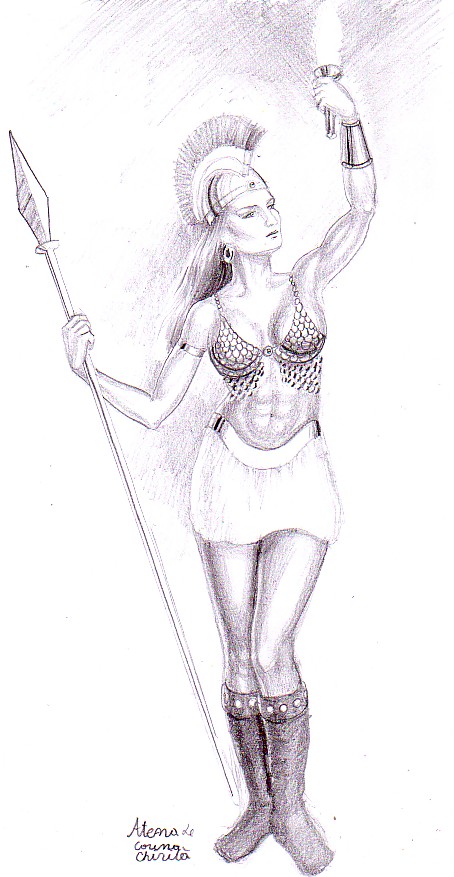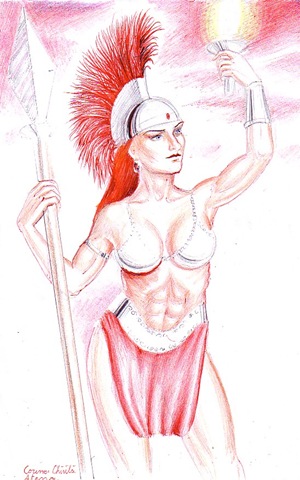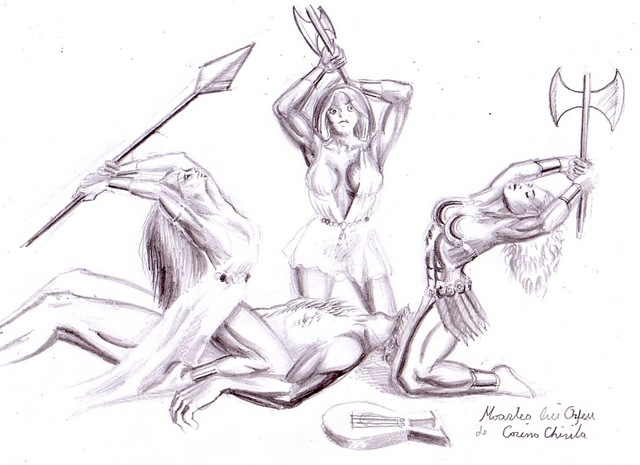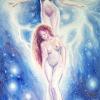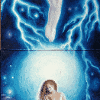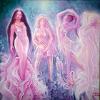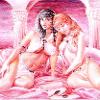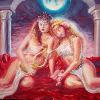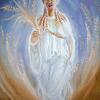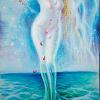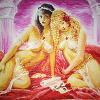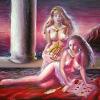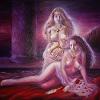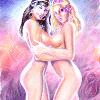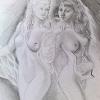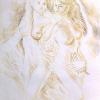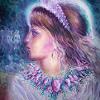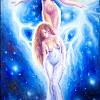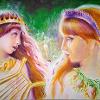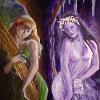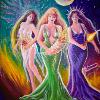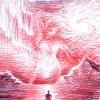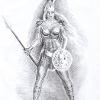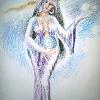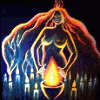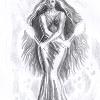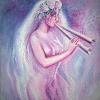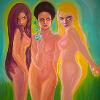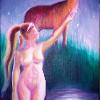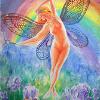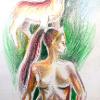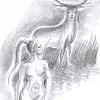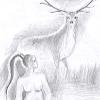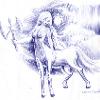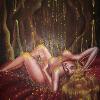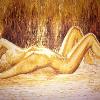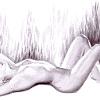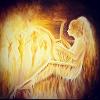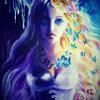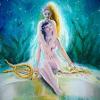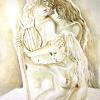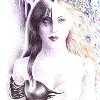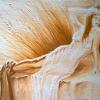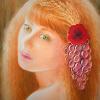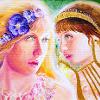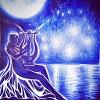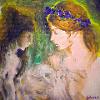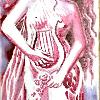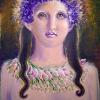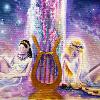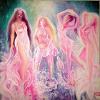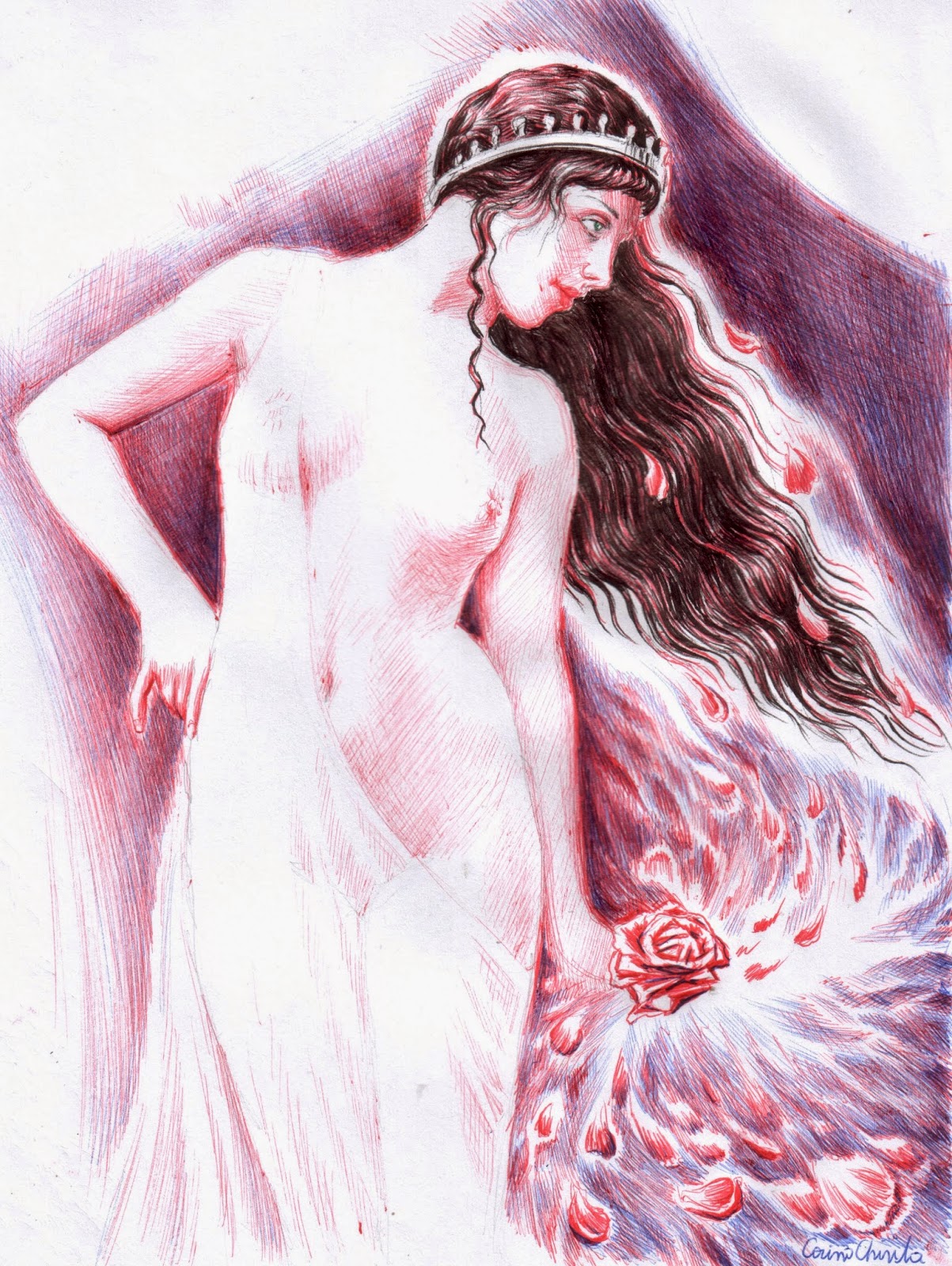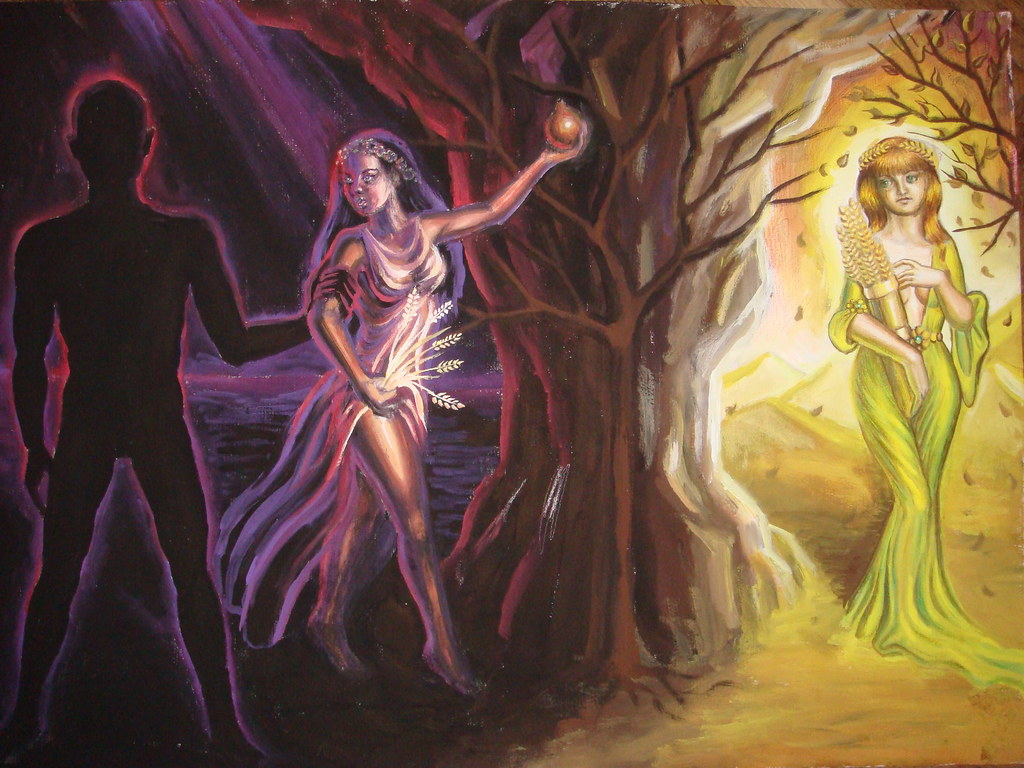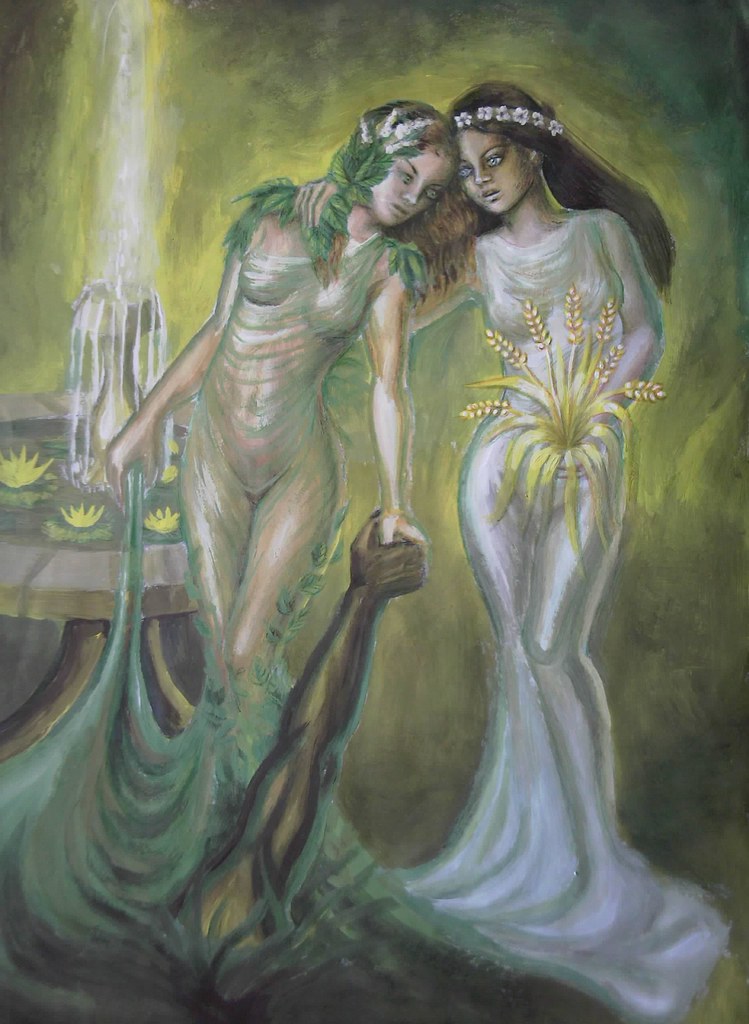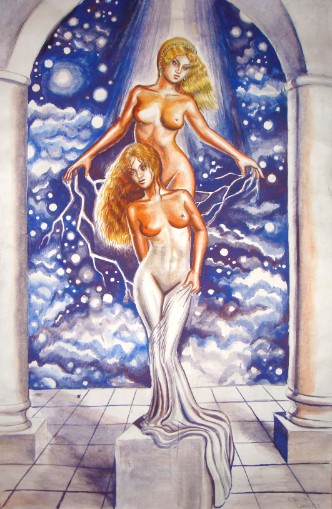
This is my watercolor painting of the moment Afrodita gave life to
Galatea.According to the myth Galatea was a statue the sculptor
Pygmalion, her creator fail in love with.Moved by his feelings Afrodita
gave life to the statue. I thing this myth represents me be cause like Pygmalion did I have my own Galateea and my deep feelings and the passion i put in my art give life to her. Even if she is just a creation of my mind I'm so inlove with her.
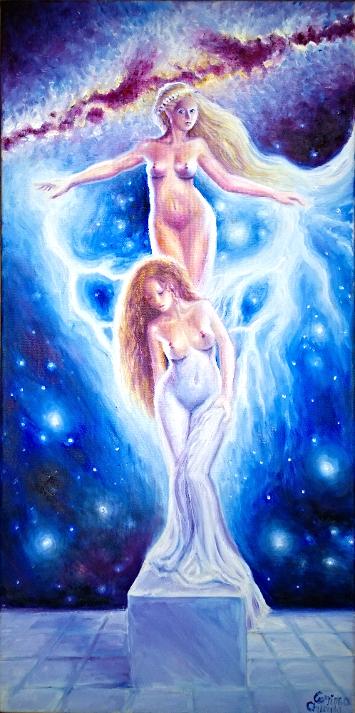
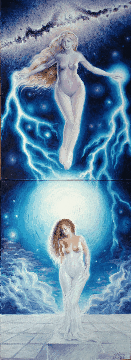
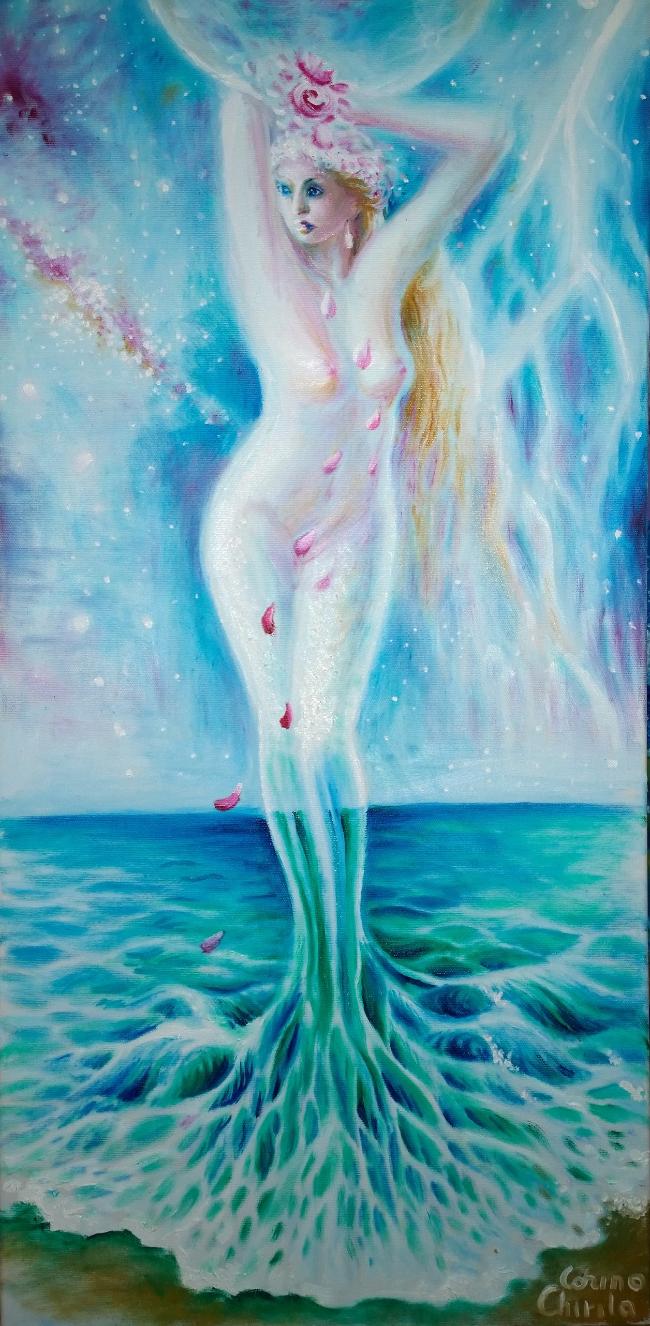

This is my painting of Danae
In Greek mythology, Danaë was a daughter of King Acrisius of Argos and Eurydice (no relation to Orpheus’ Eurydice). She was the mother of Perseus by Zeus. She was sometimes credited with founding the city of Ardea in Latium.
Disappointed by his lack of male heirs, Acrisius asked an oracle if this would change. The oracle told him to go to the Earth’s end where he would be killed by his daughter’s child. She was childless and, meaning to keep her so, he shut her up in a bronze tower or cave. But Zeus came to her in the form of rain or a shower of gold, and impregnated her. Soon after, their child Perseus was born.
None too happy, but unwilling to provoke the wrath of the gods by killing his offspring, Acrisius cast the two into the sea in a wooden chest. The sea was calmed by Poseidon at the request of Zeus and the pair survived. They washed ashore on the island of Seriphos, where they were taken in by Dictys, the brother of King Polydectes, who raised the boy to manhood.
Later, after Perseus killed Medusa and rescued Andromeda, the oracle’s prophecy came true.
He started for Argos, but learning of the prophecy instead went to Larissa, where athletic games were being held. By chance Acrisius was there, and Perseus accidentally struck him with his javelin (or discus), fulfilling the prophecy. Too shamed to return to Argos he then gave the kingdom to Megapenthes, son of Proetus (Acrisius’ brother) and took over his kingdom of Tiryns, also founding Mycenae and Midea there.
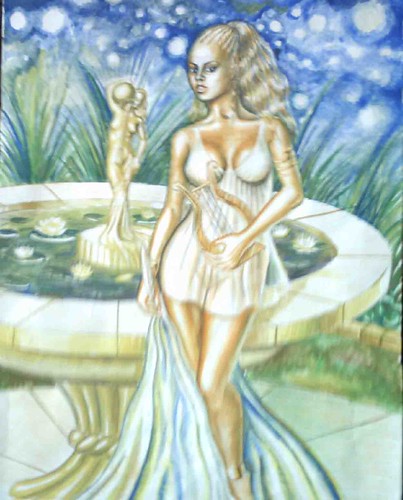
Like Sappho, Korinna from Tanagra was one of the greatest poets in the ancient Greece.We don't know when she was born but she lived around 500 b.c.Her works treated subjects related to greek mythology and the link betweent myths and real life.This is my painting of Korinna
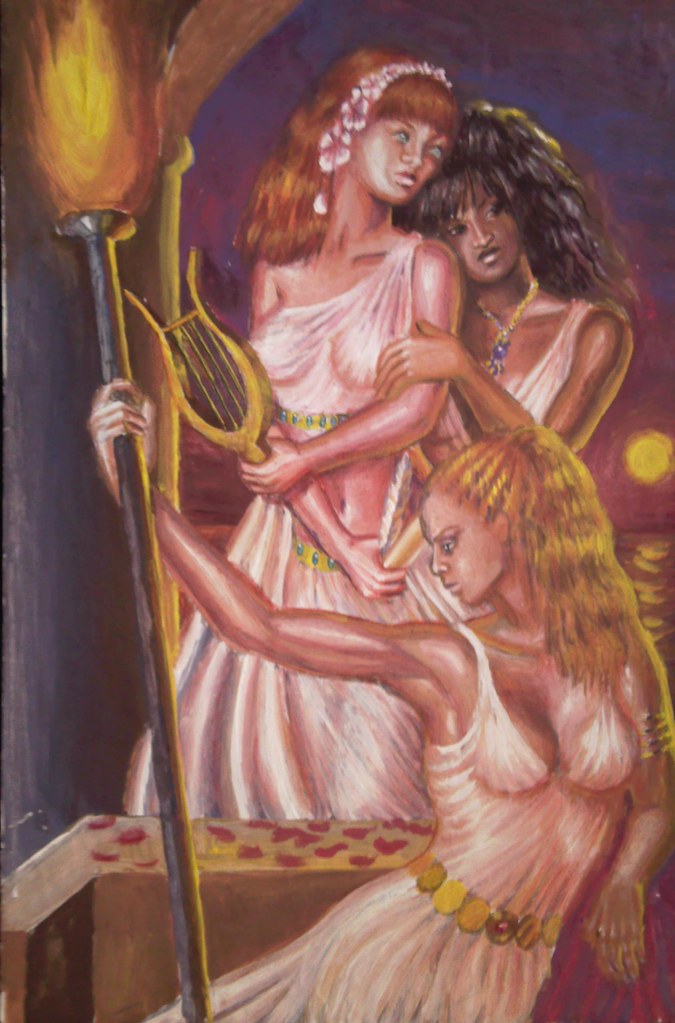
Korinna, Erinna and Sappho, the greatest female poets of the ancient Greece
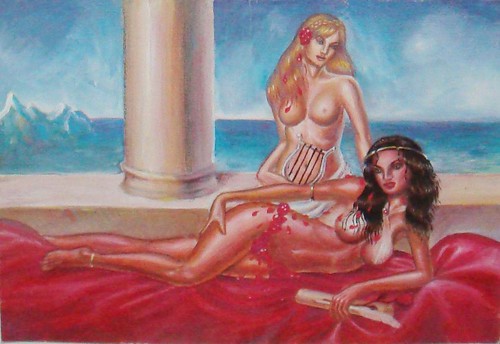
Sappho and one of her girls, this tempera painting has been stolen during an art show in 2008
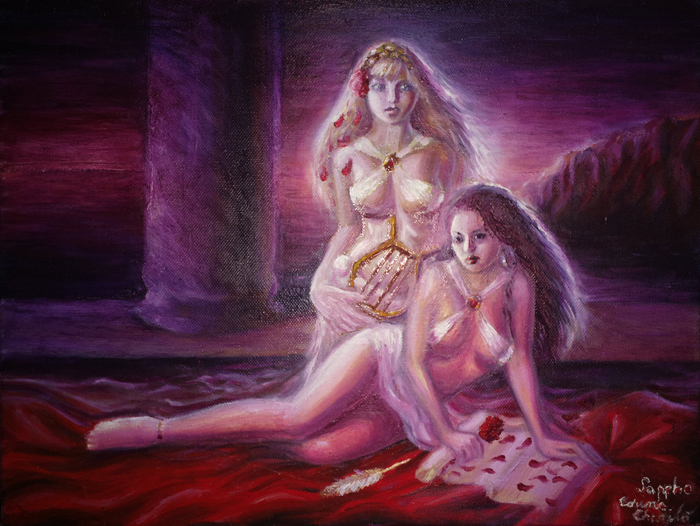
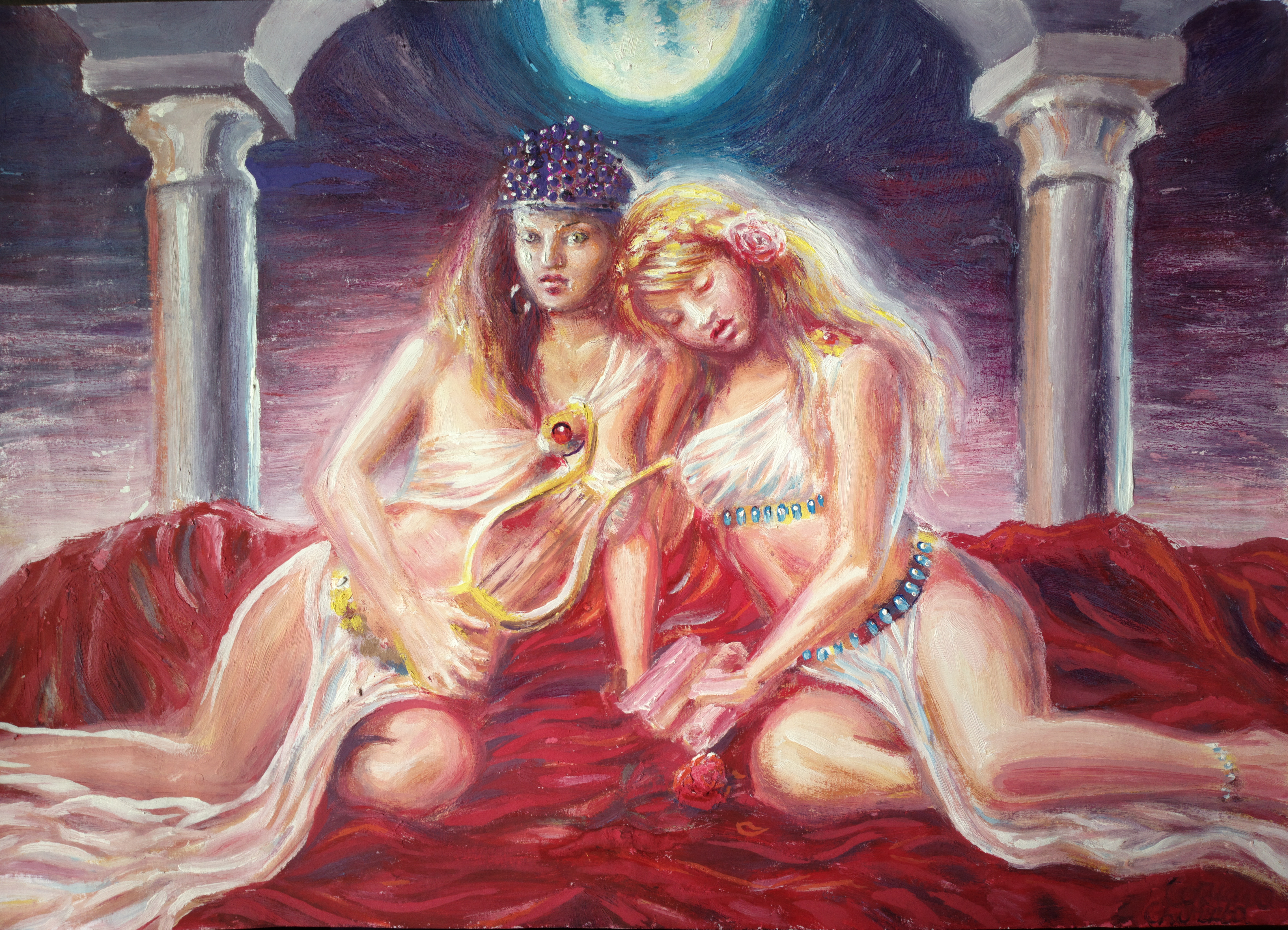
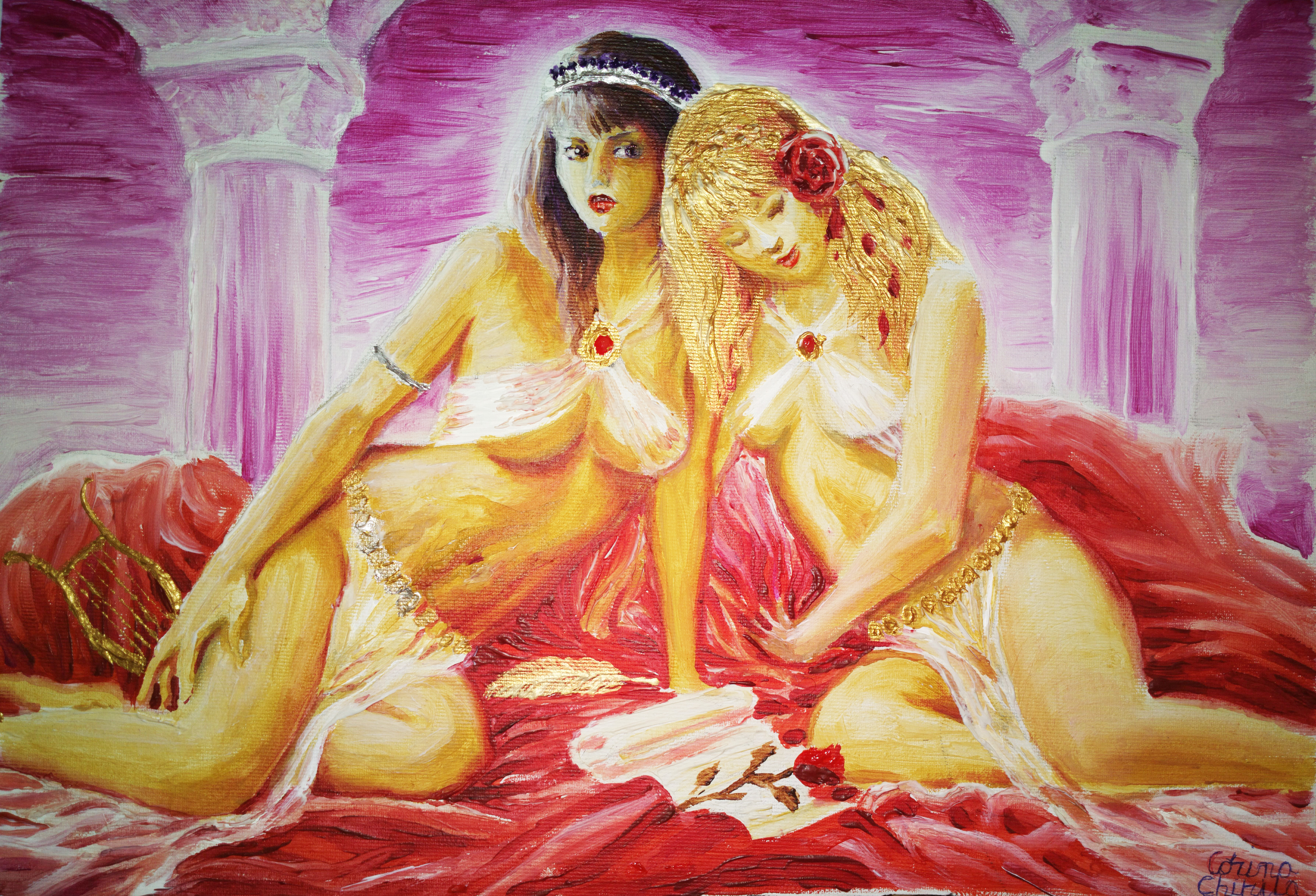
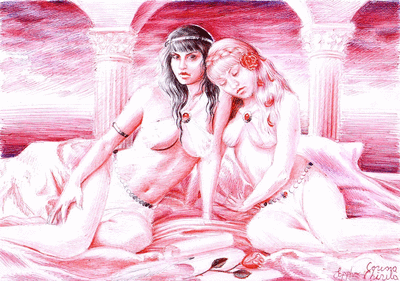
Sappho was born around 615 B.C. on the N.E. Aegean island of Lesbos in the Pre-classical Greek period at the very foundation of the later Greek Democracy. This was an exciting new time, and Sappho was involved with all the changes that occurred. For example, the Greek alphabet had just been invented, coin money was minted for the first time, the political system had changed radically, and the arts were vigorously renewed. Sappho was greatly loved throughout antiquity both for her personal qualities and creativity. She was widely acclaimed for the astonishing beauty and originality of her lyric poetry which she brilliantly perfected. Poetry in her day was usually accompanied by music and dance. Sappho was so accomplished at composing in all three modes, that she acquired the reputation for being the Divine Inspiration of the Muses. She was held in high esteem and copied even 500 years after her death. However, for the past two thousand years, her work has been fragmented and distorted. Absurd myths have been attached to her name by the patriarchy

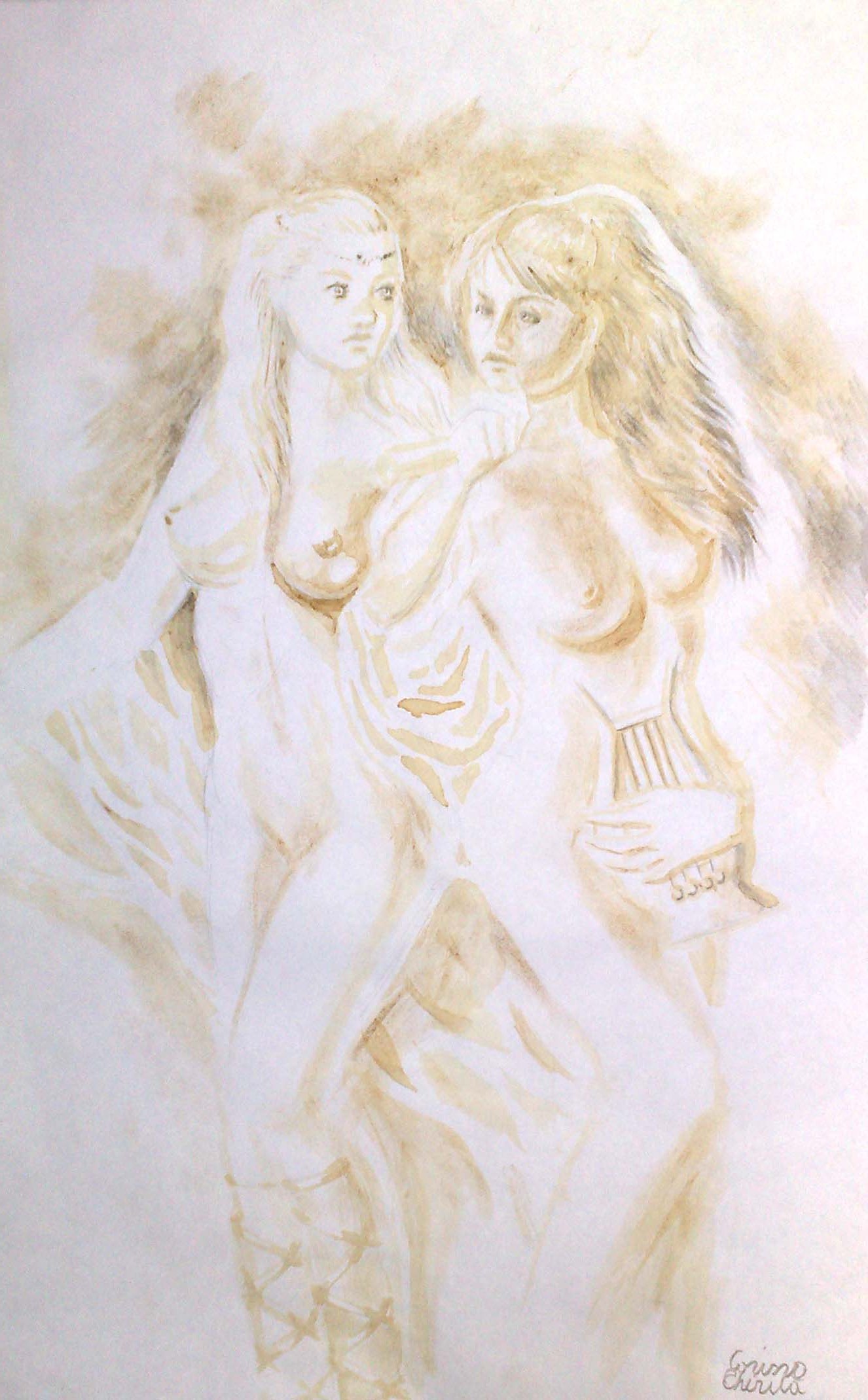
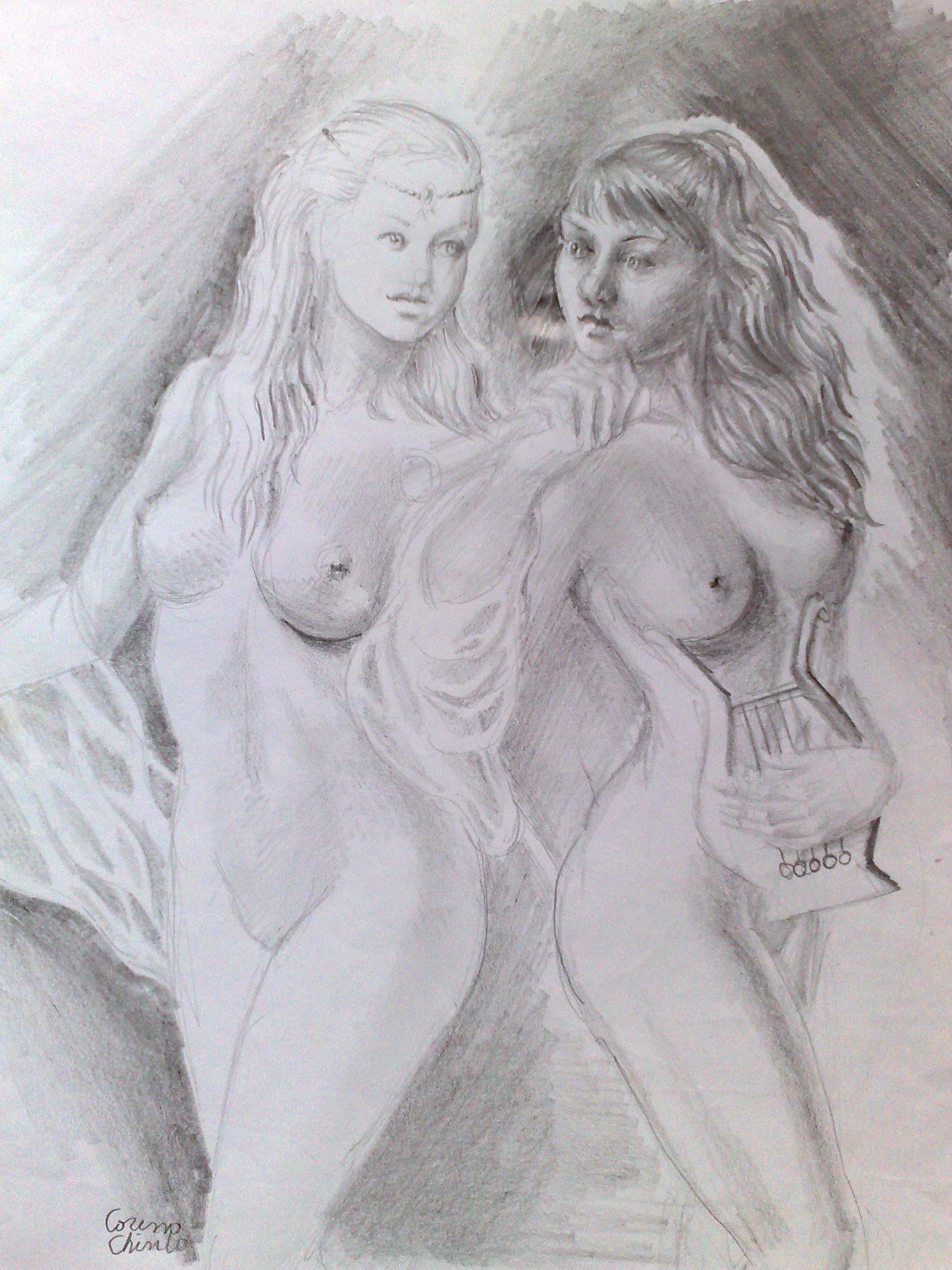


Sappho, Erinna and two of the maidens on the isle in the temple of Aphrodite, celebrating the goddess

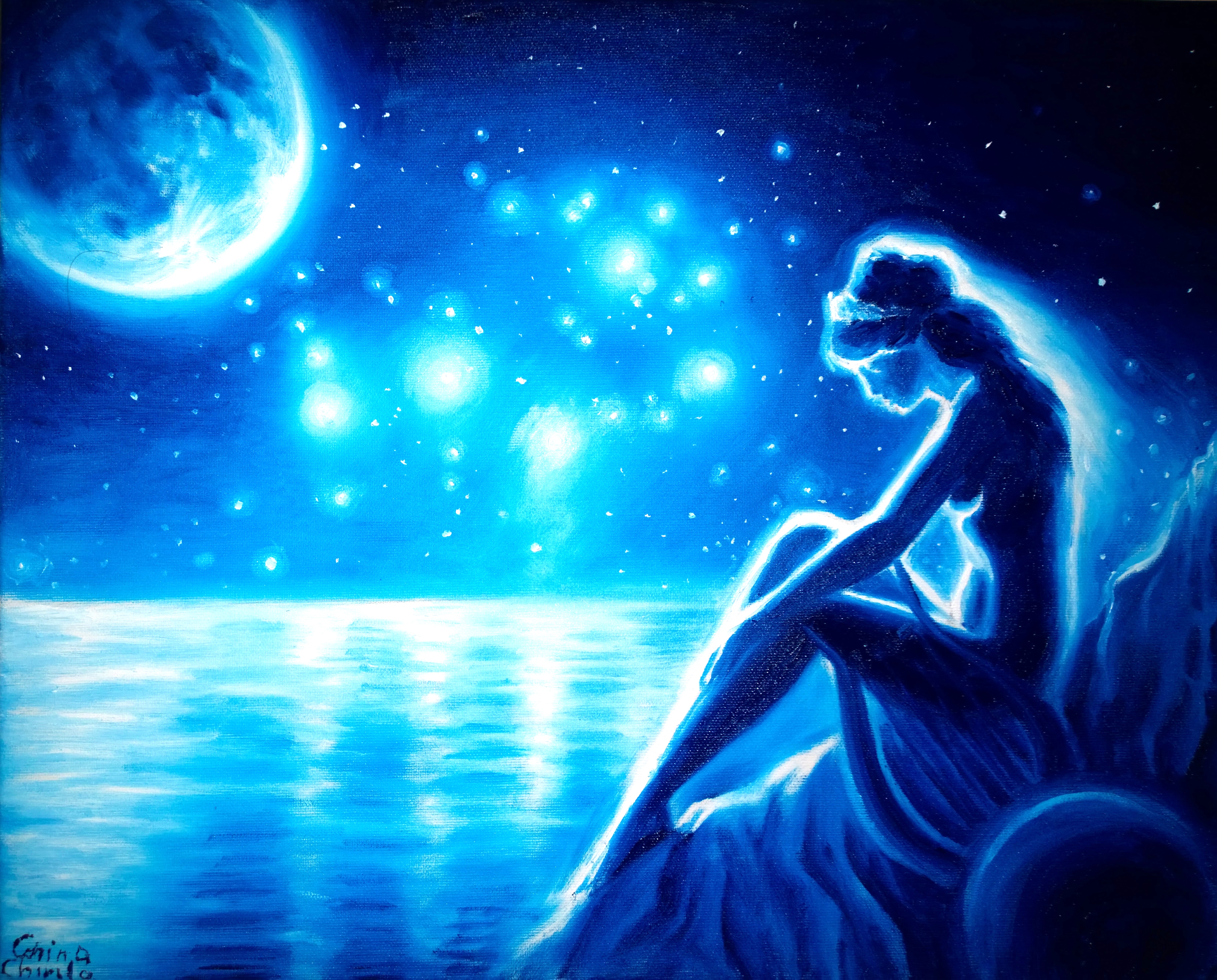
Sappho has written this poem feeling lonely, as lonely as I feel, that feeling of loneliness that we all have when we cannot be with the one we love or we want to love.
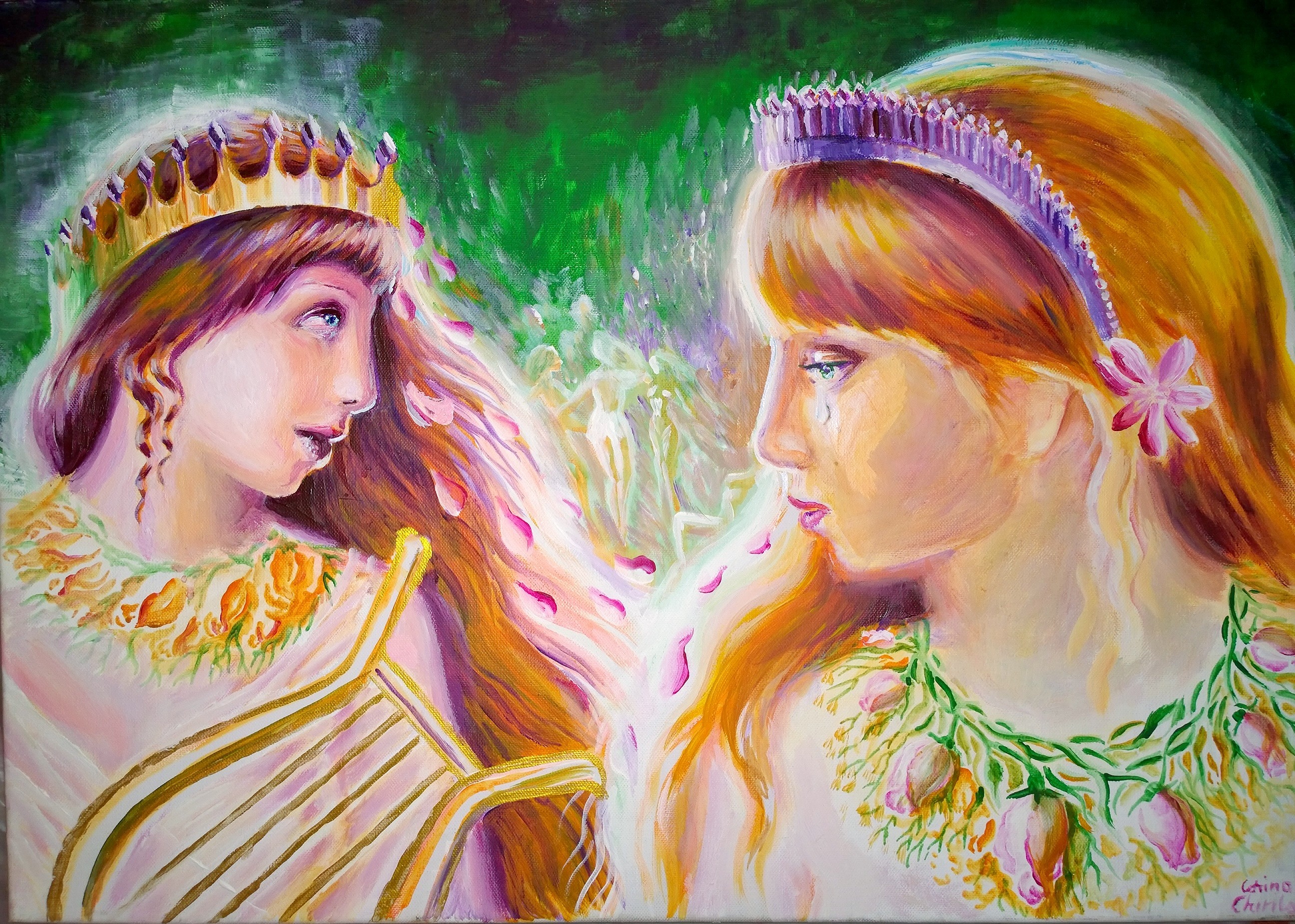
When she left, she wept
a great deal; she said to me, "This parting must be
endured, Sappho. I go unwillingly."
but remember (you know
well) whom you leave shackled by love
of our gifts to Aphrodite
and all the loveliness that we shared
braided rosebuds, dill and
crocus twined around your young neck
and on soft mats girls with
all that they most wished for beside them
choruses without ours,
no woodlot bloomed in spring without song..
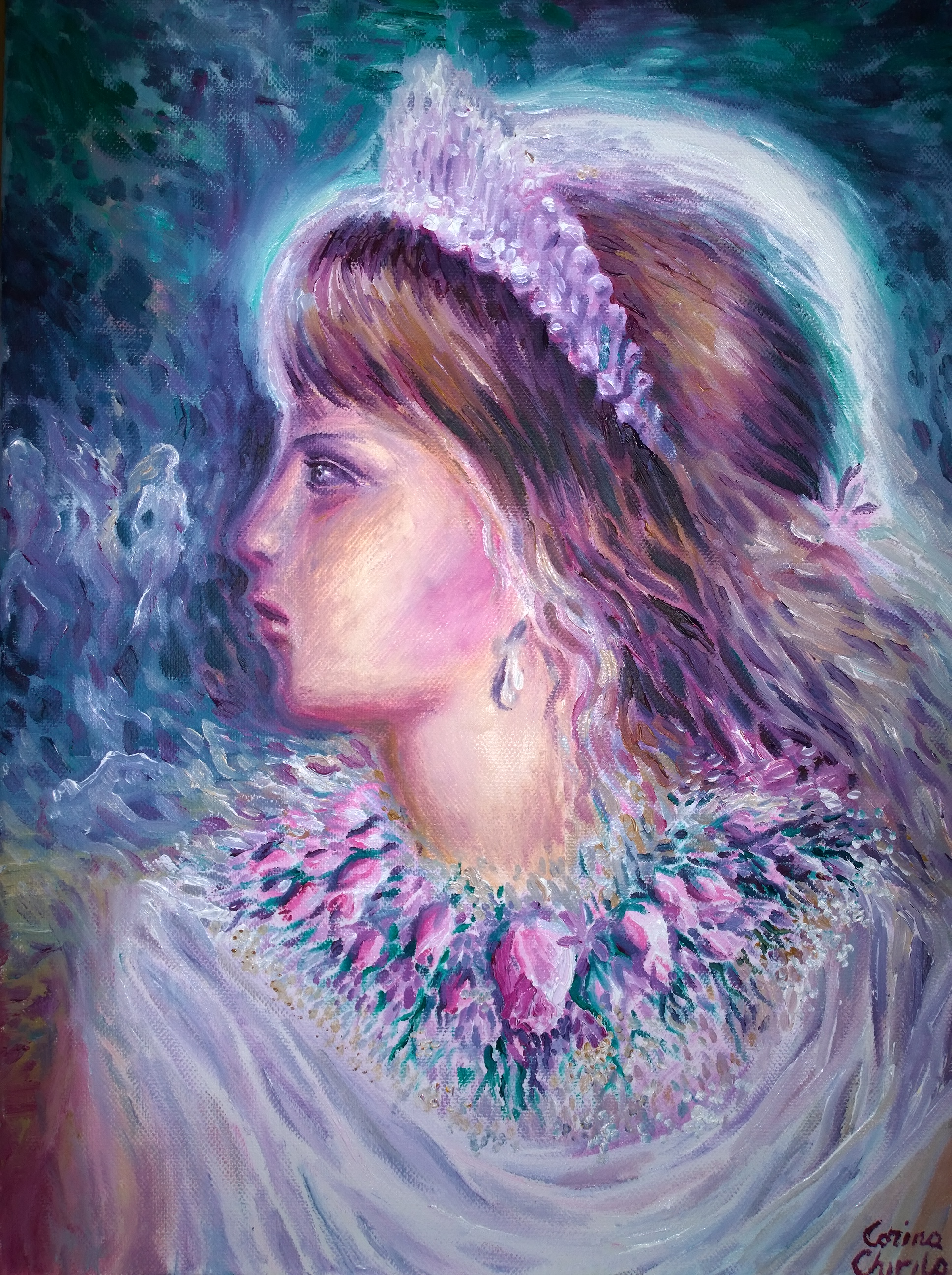
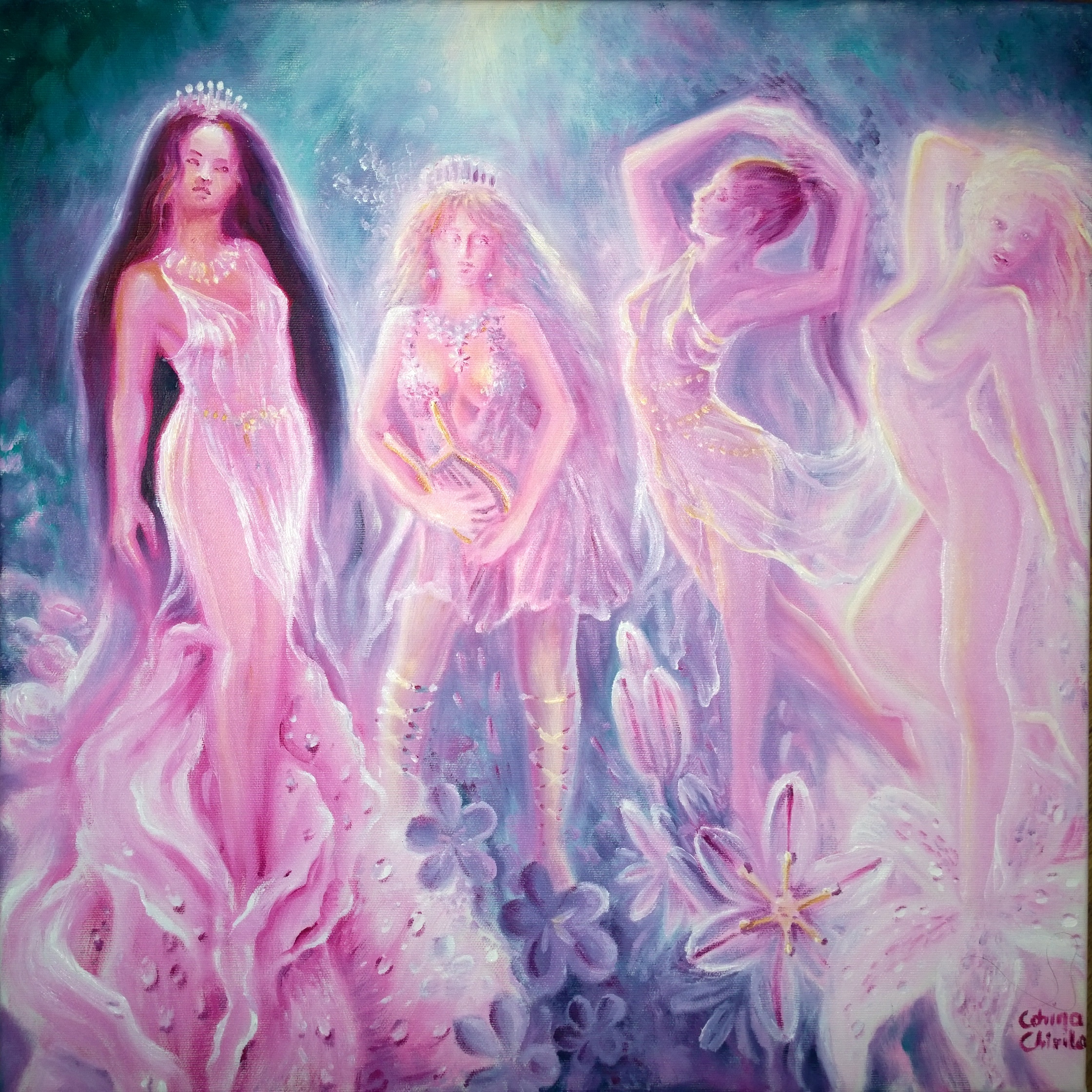
Eranna, a slight girl I counted thee,
When first I looked upon thy form and face,
Slim as a reed, and all devoid of grace.
But stately stature, grace and beauty came
Unto thee with the years — O, dost not shame
For this, Eranna, that thy pride hath grown
Therewith? Alas for thee ! I have not known
One beauty ever of more scornful mien,
As though thou wert of all earth's daughters queen!
Mnasidica is comelier, perchance,
Than my Gyrinna — ah, but sweetly rings
Gyrinna's matchless voice ! In rapture-trance
I listen, listen, while Gyrinna sings.
Hero of Gyara is fleet of foot
As fawns, and as light-footed in the dance,
The dance taught by the measures of my lute.
Ever-impassioned Gorgo! — is it strange
That I grow weary of the change on change
Of thine adored ones? — of thy rhapsodies
O'er each new girlfriend, while the old love dies?
Joy to thee, daughter of a princely race,
For thy last dear one! Lie in her embrace —
Till shines a new star on thy raptured eyes!
Fonder of maids thou art, I trow, than she.
The ghost who nightly steal young girls, to be
In Hades of her woeful company.
This is my fair girl-garden: sweet they grow —
Rose, violet, asphodel and lily's snow;
And which the sweetest is, I do not know;
For rosy arms and starry eyes are there.
Honey-sweet voices and cheeks passing fair.
And these shall men, I ween, remember long;
For these shall bloom for ever in my song.
The rose
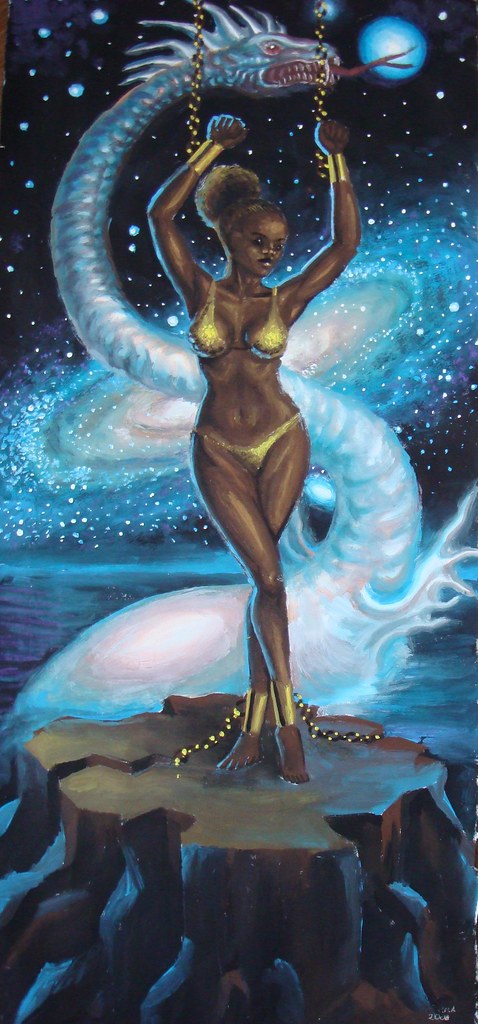
In Greek mythology, Andromeda ("ruler of men") was the daughter of Cepheus and Cassiopeia, king and queen of Aethiopia.

This is my tempera painting of the milky way and below there is a newer version I've made using oil on glass.
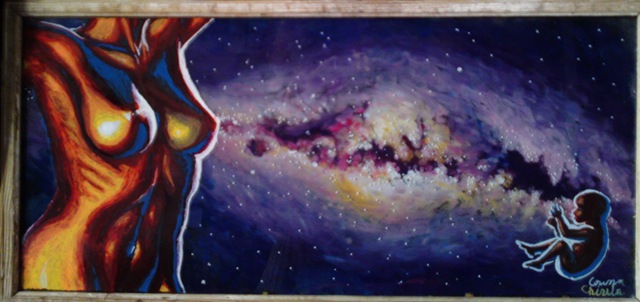
The Greek name for the Milky way (Ãáëáîßáò Galaxias) is derived from the word for milk (ãÜëá, gala). One legend explains how the Milky Way was created by Heracles when he was a baby. His father, Zeus, was fond of his son, who was born of the mortal woman Alcmene. He decided to let the infant Heracles suckle on his divine wife Hera’s milk when she was asleep, an act which would endow the baby with godlike qualities. When Hera woke up and realized that she was breastfeeding an unknown infant, she pushed him away and the spurting milk became the Milky Way.

This is my painting of Psyche and Cupidon
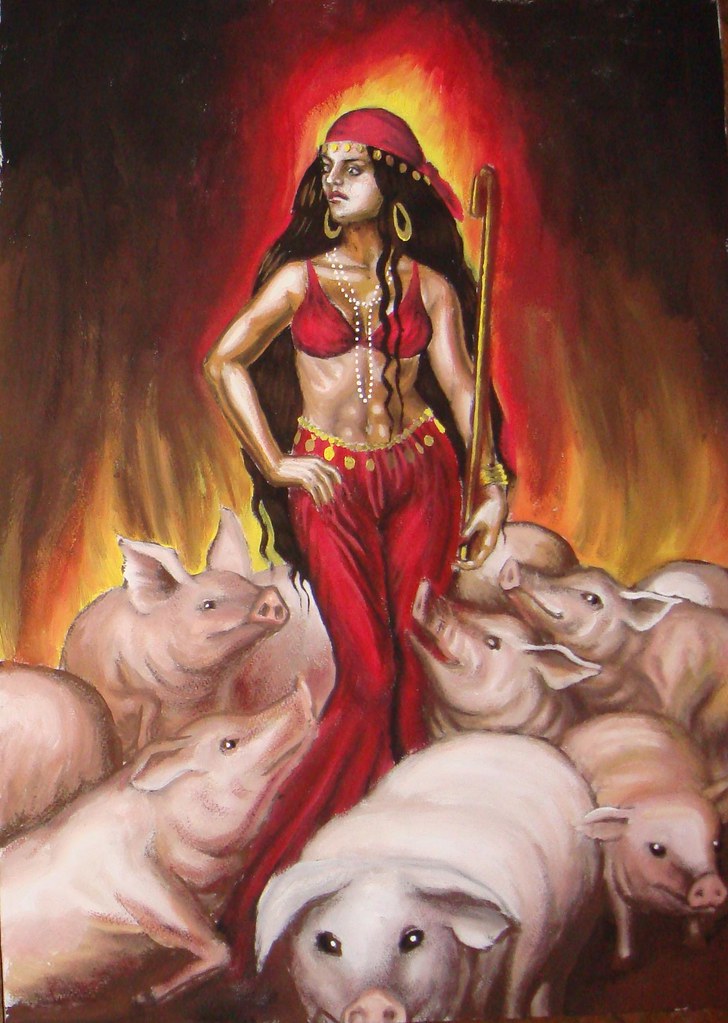
Circe and the argonauts turned into pigs

My pencil drawing of Medusa, one of the gorgon sisters
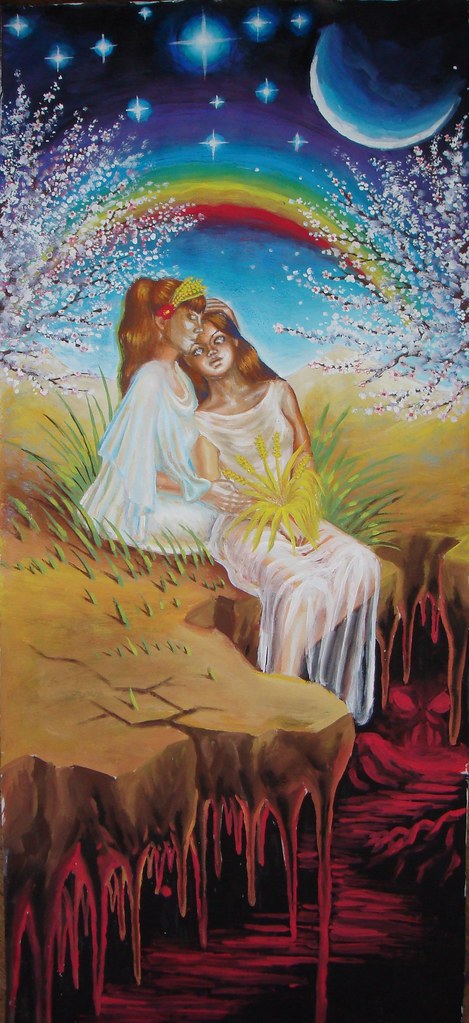
Demeter and Kore, mother and daughter

Hades taking Kore, the parthenogenetic daughter of Demeter to the underworld



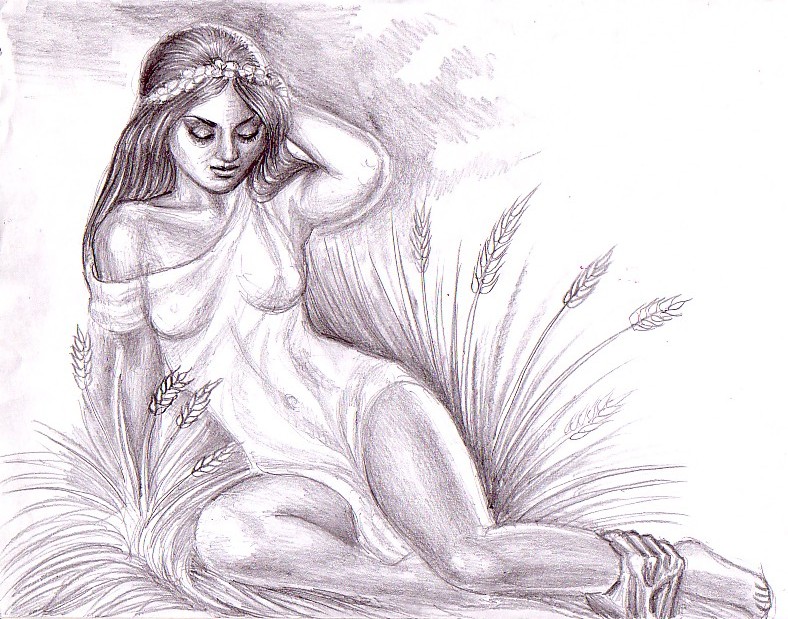
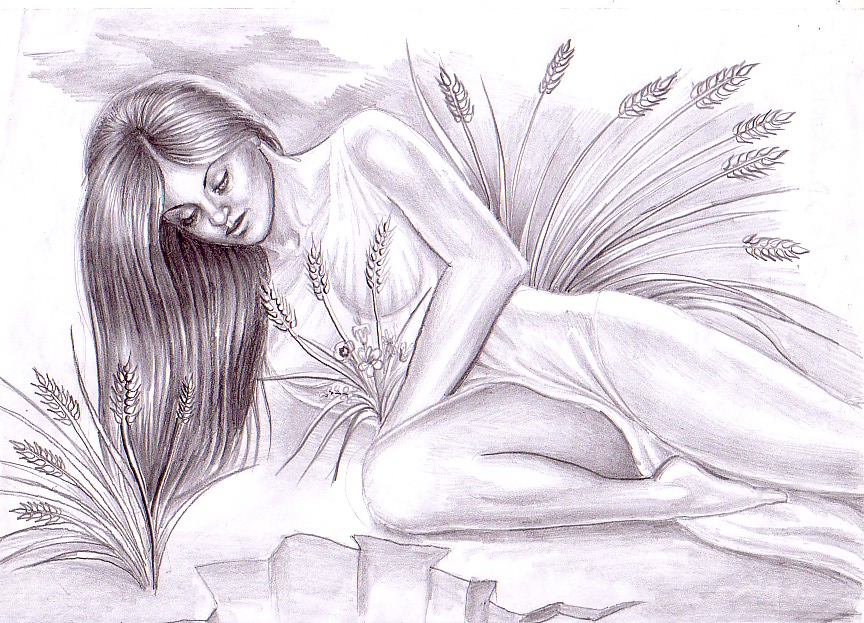
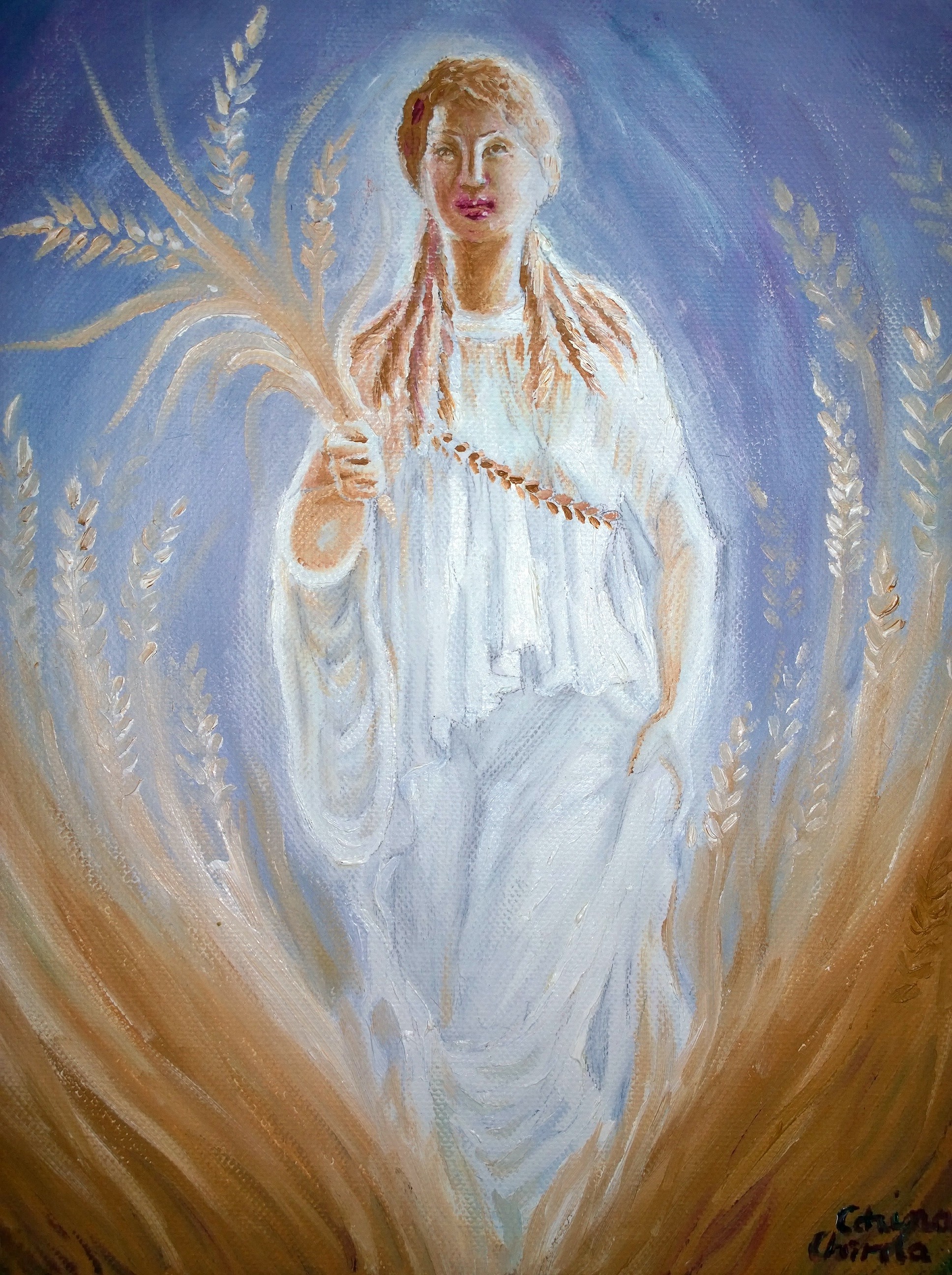
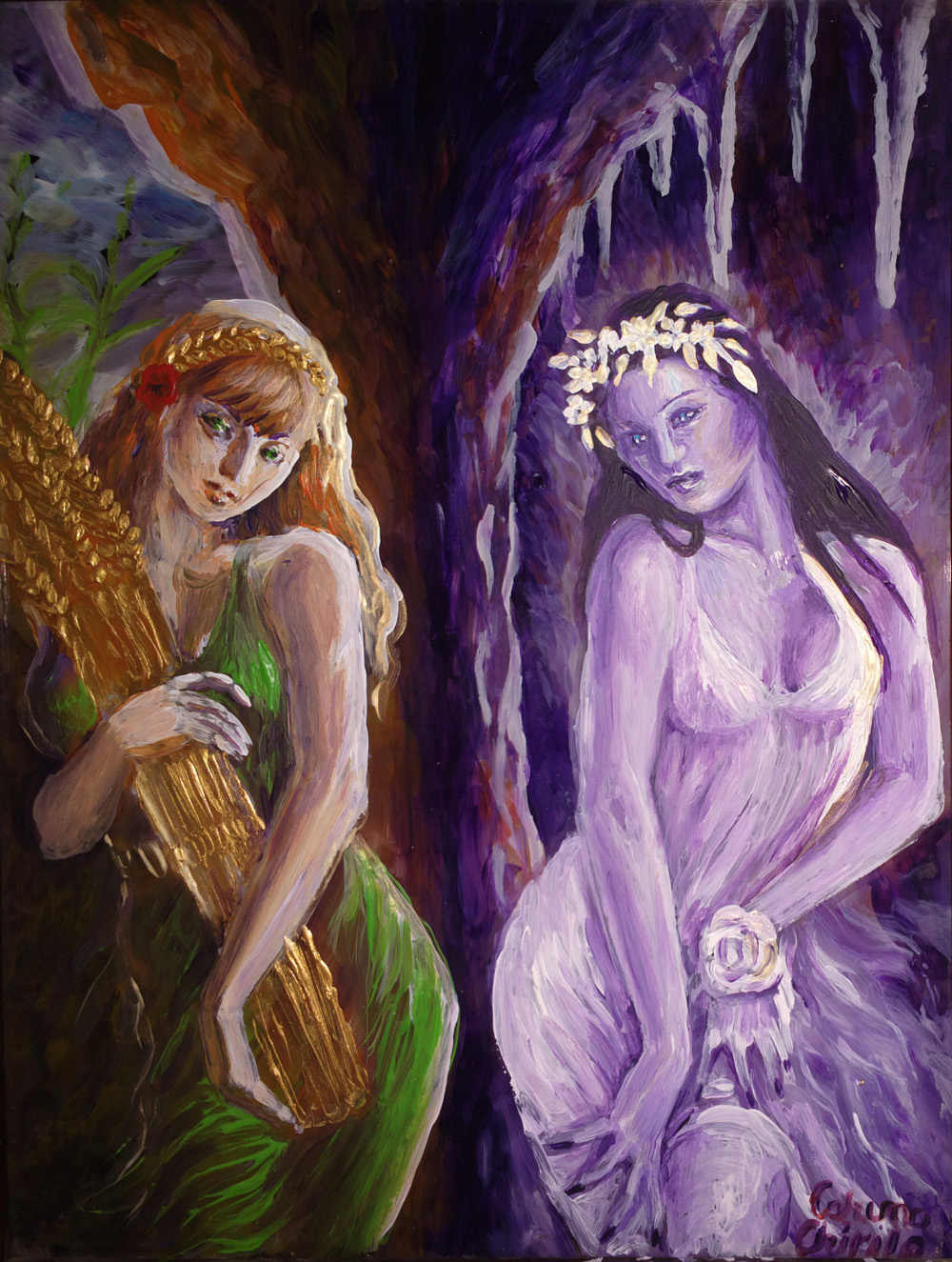
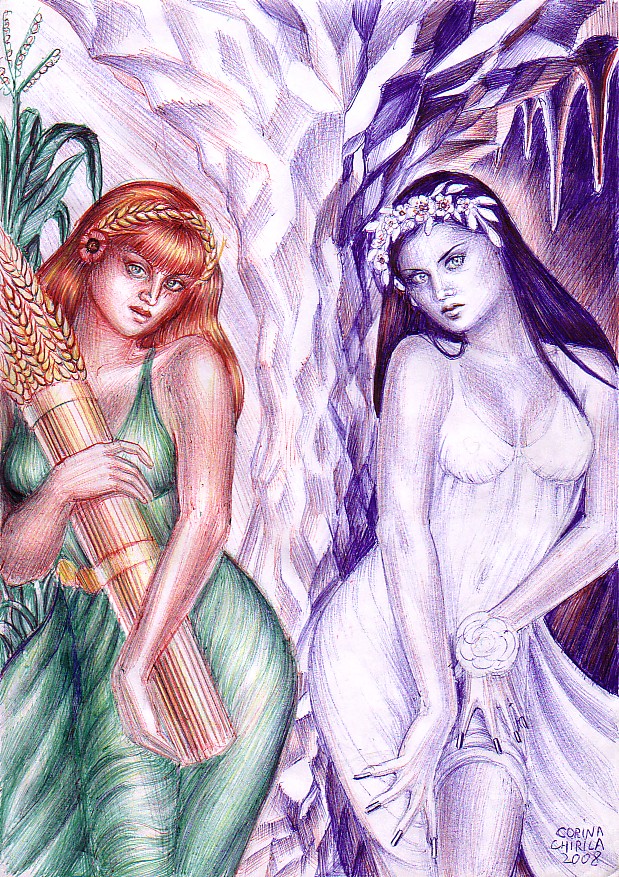
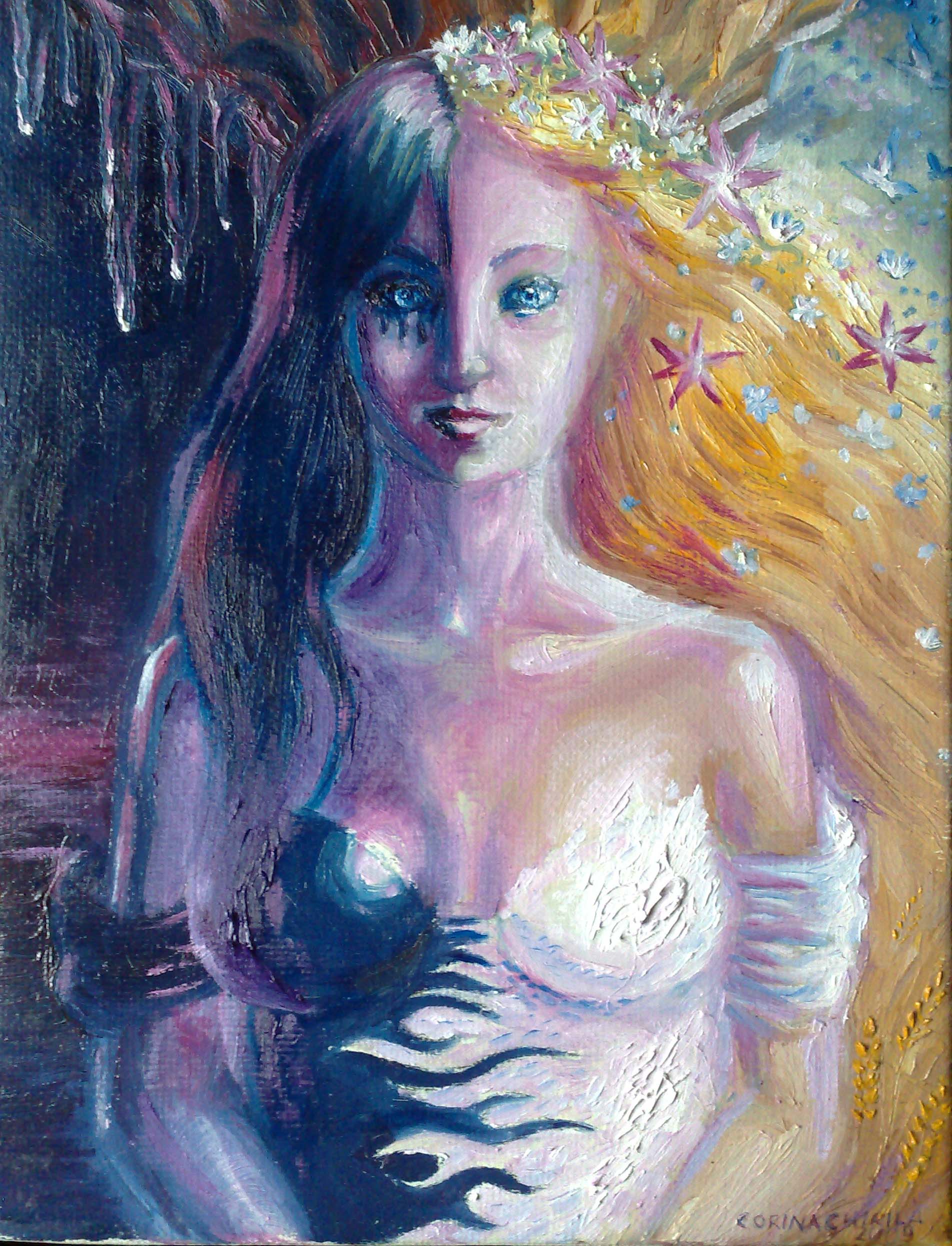
My pen drawing of Demeter and her daughter Kore(Persephone), the two agrar deites of the ancient GreeceDemeter and her parthenogenetic daughter Kore(or Persephone), pencil drawing
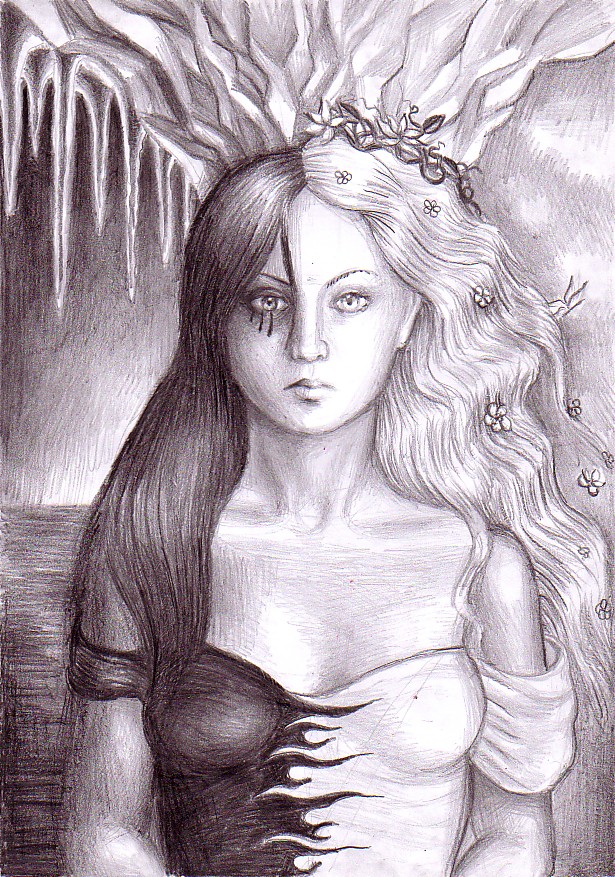
The two faces of a single goddess:Kore, the maiden, the goddess of spring, the bright side and Persephone, the queen of the underworld, the dark side

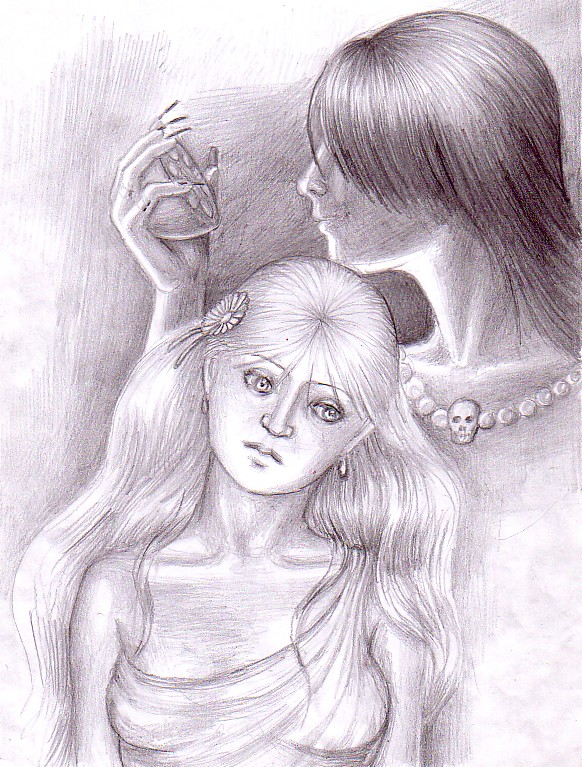
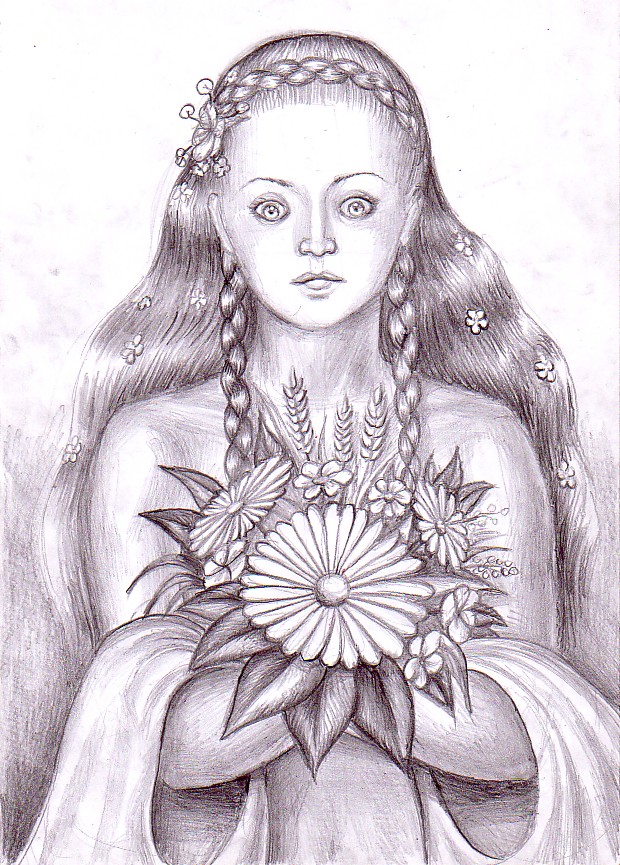

Demeter, Kore and HecateThe return of Persephone

Demeter and Bacchus
The legend of Minthe |
|
Minthe (or Mintha) was a Naiad Nymph of Mount Minthe in Elis, southern Greece who was loved by the god Hades. When she claimed to be superior to Persephone, the goddess transformed her into a mint plant. |

The daughters of minyas
Bacchus was the god of wine and of the special form of inspiration that wine brings. His divinity was eventually to be acknowledged across the ancient world, but that did not happen without opposition. The last of the myths of Bacchus belong to the period that followed his ascent to mount Olympos, and they tell how it came about that his divine power was asserted and his opponents were finally defeated.
Strangely, the opposition to Bacchus was at its strongest in the very region of Greece where he was conceived.
There is a small, ancient city in Boiotia, Orchomenos, forty miles from Thebes. Orchomenos, its founder, was the son of Zeus and Danae (one of Semele’s predecessors). His son Minyas was now king of Orchomenos, and he had three daughters, Leukippe, Arsippe and Alkithoe.
They were good, hard-working, home-loving girls. They loved their husbands, says Aelian, who gives an outline of their story in his Miscellany. They loved their spinning, according to Ovid, and they saw no reason to interrupt their quiet pleasures because the priest of Bacchus had announced a festival for the new god. What was more, they saw no reason to give their servants a holiday.
Elsewhere in Orchomenos – and elsewhere in Boiotia – noblewomen and slaves side by side wrapped fawnskins around their shoulders and unfastened the ribbons that usually tied their hair. They put on wreaths of vine and ivy, and each carried a thyrsos, as they set out towards the mountains at nightfall to enact the traditional ritual that young Bacchus and his Mainads had established. The lines of ever-moving torches grew longer and reached higher towards the sky. The household of Minyas and his daughters worked as hard as ever. Can it be that they were worshippers not of Bacchus but of Hera, who favours married love and dutiful households? They spun and wove and made sure that their servants worked alongside them.
One unexpected detail is provided by Antoninus Liberalis in a collection of mythical tales called Metamorphoses; he drew on the work of a local Boiotian poetess, Corinna of Tanagra, according to whom Bacchus himself visited the recalcitrant household of Minyas and for this purpose temporarily adopted the shape and the persuasive tones of a young girl.
‘All the women of Orchomenos are on their way to the mountains,’ she said. ‘Will you not join them in the worship of Bacchus?’
They seemed not to be listening.
‘This new god is powerful,’ she continued modestly, ‘and he has much to offer to us mortals.’
They were not interested.
‘It is said that he becomes impatient with those who reject him, and uses his power to punish such people.’
They changed the subject.
Bacchus found that he was becoming impatient. He turned into a lion cub, and that new shape, though it left him unable to use human speech for persuasion, did at least monopolise the attention of the household of Minyas. The lion cub glanced for a moment at the beams that formed the frame of the loom at which some of the women were working. In response to that glance, milk and honey began to drip from the ends of the beams. Then he turned into a leopard, and at the same moment the flow of milk became a river of wine. Then he became a bull. And during these transformations the noise of unseen drums, cymbals and flutes was heard through the house. The sacred scent of myrrh and saffron filled the air. The half-finished tapestry on the loom developed leaves and tendrils and turned itself into a flourishing vine.
The daughters of Minyas were never truly conscious of the powers of the god that they had scorned. Until this moment they had been composedly scornful of the new religion and its demands. Now, as the house was transformed around them, Bacchus entered their minds, as gods can, and their terror and confusion led them beyond all understanding.
They knew at once that a sacrifice must be made to lessen his anger. That was almost all that they knew … but no: they remembered having had a way of choosing when some unwelcome task had to be allotted to one of the three. They threw three pebbles, each of a different colour, into an earthenware jug, and a servant reached in blindly to bring out one of them. It was Leukippe’s. She must provide the sacrifice. So Leukippe called for her son, Hippasos, and when he came she seized hold of him and held him down. Then, helped by her two sisters, she tore him to pieces. As was proper at sacrifices, she burned the fat from his body on an altar; the flesh they themselves tasted. At last, with the blood of Hippasos still running from their lips and spattering all their clothes, the three sisters made their way towards the mountain. The rest of the womenfolk of Orchomenos were meanwhile returning, but the daughters of Minyas remained there, feeding on ivy leaves, bindweed and bay.
Eventually Hermes, aware of their apparently endless confusion, ended it by turning them into three creatures of the air, a real metamorphosis succeeding the false one. Leukippe became a bat, Arsippe a little owl and Alkithoe an eagle owl. All three of these hate the sunlight, Antoninus Liberalis observes. Ovid, however, says that it was Bacchus himself, not Hermes, who effected the transformation, and all three became bats. As Ovid tells it, on a certain night so dark that they could not see what was happening to them, all three of the sisters felt that skinny membranes were growing along their arms and legs, and they themselves were shrinking. Although they had no feathers they found that they could fly, and that is what they have done ever since, every night, still continuing their complaints in thin, high-pitched, reedy voices. Appropriately, since they had been so reluctant to go to the woods and hills with the Mainads, they now do not haunt the woods and wild places, as birds do, but attics, roofs and barns.
The story of the daughters of Minyas is told by Antoninus Liberalis, Metamorphoses 10, citing Korinna and Nikandros; also by Aelian, Miscellany 3.42; Ovid, Metamorphoses 4.1-415; Plutarch, Greek Questions 38. For the momentary idea of Pentheus’s mother and sisters that they will feast on the flesh that they have killed — on Pentheus himself, in effect — see Euripides, Bakchai 1184 with E. R. Dodds’s note in his commentary on this passage
This is my painting of the daughters of Minyas
Jupiter and Callisto

Pleiads, the seven sisters
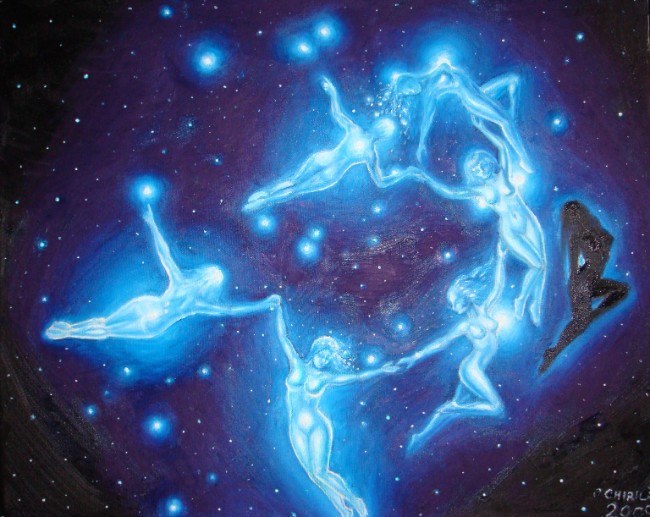
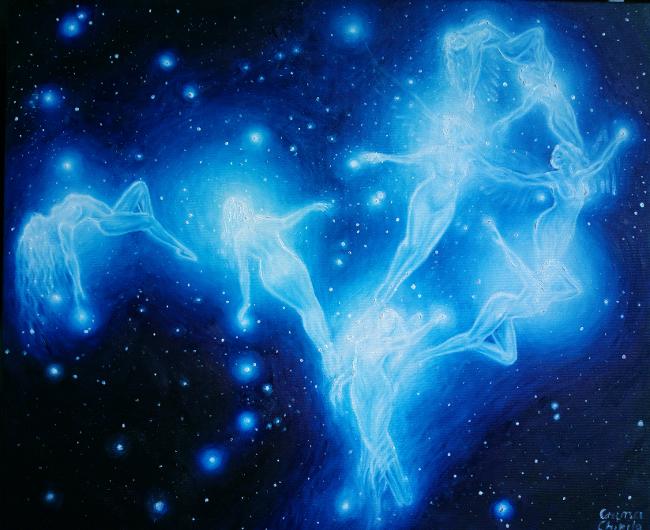
The birth of Aphrodite
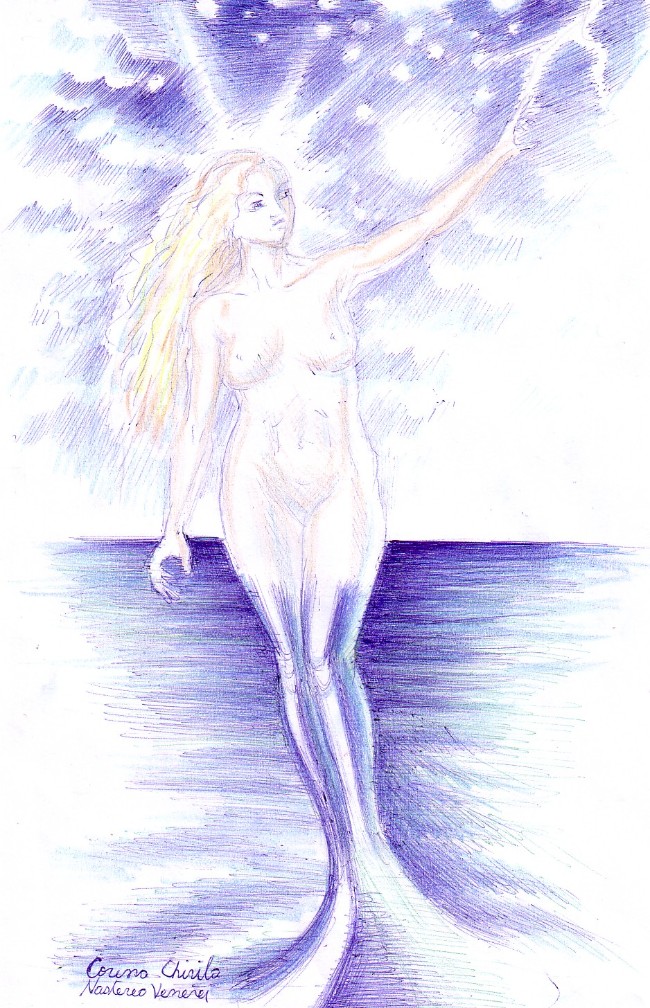
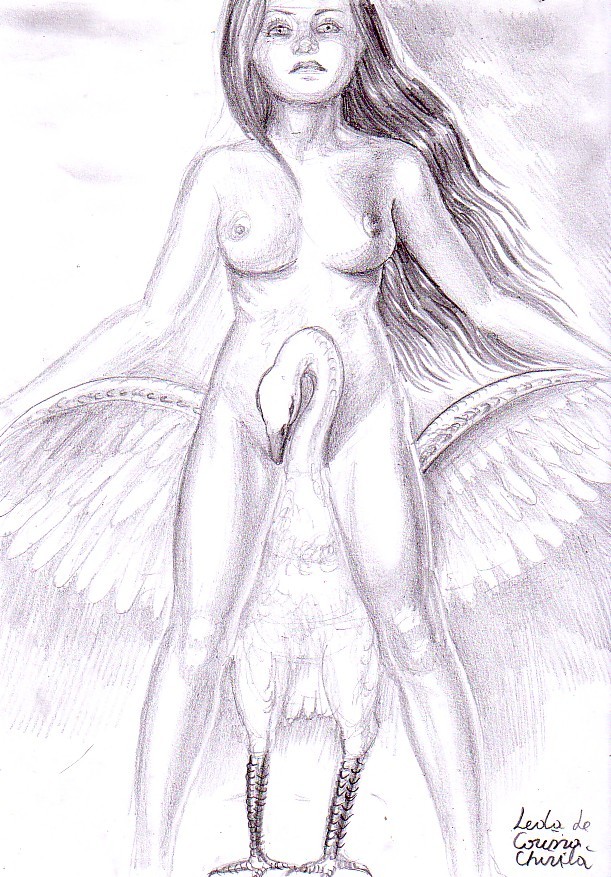
Leda and zeus as a swan
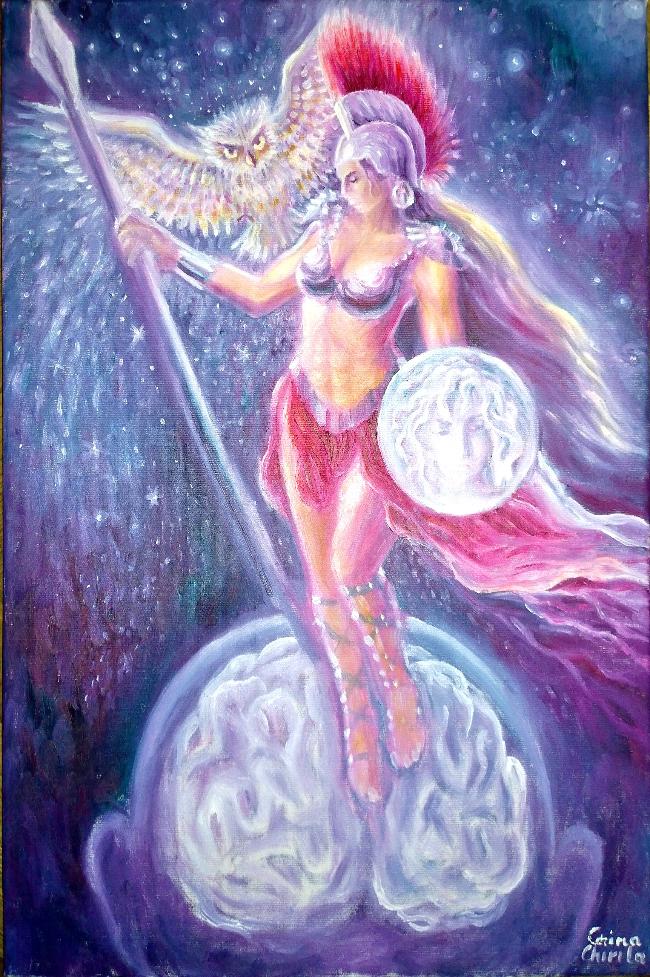
The Goddess Athena
